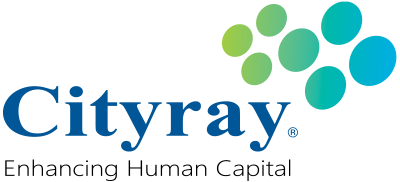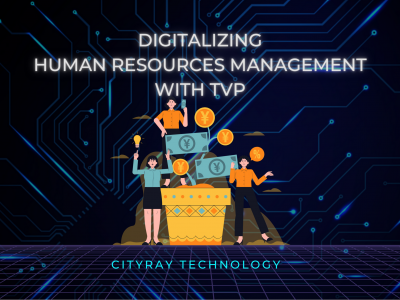HR Analytics: How it benefits HR management?
Learn the features and metrics of HR analytics. To know more about how HR analytics benefits workforce management and why you need to adapt HR analytics!
HR Analytics: How it benefits HR management?
What is HR analytic/ workforce analytics?
With the rise of the gig economy and other non-traditional work arrangements, today’s labor market is growing in complexity, and creating several recruiting challenges. In view of that, almost 50% of HR leaders cited HR technology such as HR analytics to be their top investment priority, according to a survey by Gartner.
HR analytics, also known as workforce analytics, is the process of using data analysis techniques to gain insights and make data-driven decisions about various aspects of an organization’s human resources function.
The goal of HR analytics and workforce analytics is to improve the effectiveness of HR policies and practices by using data to inform decisions, rather than relying solely on intuition or experience, so more informed decisions about the workforce management can be made. This involves leveraging various types of HR analytics techniques to gain actionable insight into your workforce’s performance, such as employee demographics, performance metrics, employee engagement, turnover rates, and more.
To illustrate HR analytics and workforce analytics in a more lively manner, we can take a retail company that is experiencing a sales drop as an example. There can be multiple factors behind a decline in sales, and one of them might be related to the workforce management.
To uncover if workforce management is a decisive reason, the workforce management team can use HR analytics and workforce analytics to analyze some key employee performance metrics, such as sales revenue, customer satisfaction ratings and attendance records. After digesting the data and identifying the patterns, the workforce management team might notice that the sales revenue per employee is lower on days when attendance is low, which suggests that attendance may be affecting performance.
Using this information from HR analytics, the workforce management team could develop strategies to improve performance and productivity. For example, to launch an attendance incentive program to encourage employees to show up to work on time, or provide additional training to improve customer satisfaction ratings.
What is workforce management ?
Workforce management (WFM) is the process of optimizing the productivity and efficiency of an organization’s workforce, during which the HR analytics and workforce analytics tactics shall be adopted. With the right workforce management strategy in place, it can be ensured that an organization has the right number of employees with the right skills, in the right place, at the right time, and at the right cost.
To help you get a clearer picture of how workforce management works, here is a breakdown of each aspect of workforce management:
Define a strategic direction
Workforce management begins with a clear understanding of the organization’s strategic direction. This involves defining the organization’s goals and objectives, identifying the workforce needs required to achieve those objectives, and developing a workforce plan to ensure that the organization has the right people with the right skills in the right roles.
Identify issues with HR analysis
To effectively manage the workforce, HR must analyze and understand the current status of the workforce management. This includes HR analytics, such as analyzing the employee demographics, turnover rates, and performance metrics, to identify areas of strength and weakness. HR can then use the information generated from HR analysis to develop targeted solutions to address workforce issues and optimize performance.
Standardize workforce management procedures
Workforce management involves standardizing HR procedures to ensure consistency and efficiency across the organization. Workforce management may involve developing standard operating procedures for recruitment, onboarding, training, performance management, and other HR functions to ensure that they are consistent and aligned with the organization’s goals and objectives.
Workforce management automation
Workforce management also involves leveraging technology to automate HR processes and improve efficiency. Automation can help HR streamline administrative tasks, reduce manual errors, and free up HR staff to focus on more strategic initiatives, such as talent development and workforce planning. HR management teams can try to identify rooms for workforce management automation through HR analysis and workforce analysis.
Workforce management progress monitoring
To ensure that workforce management initiatives are effective, HR must monitor and conduct HR analysis regularly. This may involve tracking key performance indicators, such as turnover rates, employee engagement, and training effectiveness, and using this data to make data-driven decisions to improve workforce management strategies.
Managing a workforce effectively can be a complex process, fortunately, there have been some intelligent HR analytics and workforce analytics solutions for organizations to ensure that their workforce is performing at its best. In Hong Kong, many businesses rely on workforce management applications to manage a large and diverse workforce, such as call centers, retail stores, and manufacturing plants. By using workforce management applications and HR analytics tools, these businesses can ensure that they have the right number of staff on hand at all times, which can help to improve customer satisfaction and reduce unnecessary labor cost.
How HR analytics help HR management?
HR analytics and workforce analytics are conducive to effective workforce management in several ways, from supporting routine tasks to addressing ad hoc HR issues:
1. Identify trends and patterns
HR analytics can help HR management to discover trends and patterns in the workforce, such as the turnover rates or productivity patterns. This information generated from HR analytics can be used to make more informed decisions on workforce management and identify areas for improvement.
2. Improve employee performance
HR analytics and workforce analytics can help HR management to identify reasons of low employee performance and engagement, for example, the lack of training or poor workforce management practices. By addressing these issues, HR management can be specific about why employees are doing well and what they need to enhance.
3. Enhance recruitment and retention
It is very often for organizations to use multiple recruitment channels, such as job boards, social media, and employee referrals, to reach a wider pool of candidates. However, not all of them can bring the right candidates. Meanwhile, some compensation and benefit packages are critical factors in employee retention. By leveraging HR analytics and workforce analytics, the HR management team can understand the key to reduce recruitment costs while maintaining a highly skilled and engaged workforce, which is beneficial to an efficient workforce management.
4. Optimize workforce planning
HR analytics can help HR management to forecast workforce needs and to optimize workforce management. This includes identifying skill gaps, anticipating changes in the workforce, and aligning workforce management planning with business goals. By leveraging HR analytics, organizations can gain a competitive advantage by effectively managing their most valuable asset – people.
All in all, HR analytics and workforce analytics can help HR management teams to gain deeper insights into their workforce and make data-driven workforce management decisions that are aligned with the organization’s goals and objectives.
What Metrics Does HR Analytics Measure?
When it comes to HR Analytics, there has never been a one-size-fit-all metric since the workforce management varies greatly based on the organization’s resources and the type of job.
Below has listed out some of the most commonly measured HR analytics metrics:
1. Employee turnover rate
This HR analytics metric measures the percentage of employees who leave the organization over a specific period of time. High turnover rates can indicate issues with employee engagement or workforce management practices.
2. Employee engagement score
This HR analytics metric measures employee satisfaction and commitment to the organization. High engagement scores are typically associated with higher productivity, lower turnover rates, and better business outcomes.
3. Recruitment metric
This HR analytics metric measures the effectiveness of recruitment efforts, including time-to-hire, cost-per-hire, and applicant-to-hire ratio. These metrics can help organizations to optimize their workforce management as well as the recruitment processes to reduce hiring costs.
4. Performance metric
This HR analytics metric measures employee performance, including but not limited to productivity, quality of work, and attendance. This can help organizations to identify high-performing employees and rooms for enhancing the existing workforce management practices.
5. Training and development metric
This HR analytics metric measures the effectiveness of employee training and development programs, for example, the training completion rates and the impact of training on employee performance.
6. Diversity and inclusion metric
This HR analytics metric can help organizations to measure diversity metrics such as the percentage of gender, and LGBTQ+ individuals in the workforce. By tracking these metrics over time, the workforce management team can uncover the diversity of the workforce and the effectiveness of the company inclusion programs for future workforce management planning.
What Data Does an HR Analytics Tool Need?
To provide organizations with more valuable insights and recommendations, an HR analytics tool needs to digest a large amount of data in advance.
Here are some of the types of data that an HR analytics tool may need:
1. Employee data
Employee data is a critical input for HR analytics tools. This includes basic demographic data such as age, gender, and location, as well as information about employment history, performance, and compensation.
2. Organizational data
Organizational data includes information about the structure of the organization, such as the number of employees in each department and their reporting hierarchies. It can also include data on business operations, such as revenue and profitability, for the HR analytics system to analyze.
3. Recruitment data
Recruitment data includes information about the organization’s recruitment efforts, such as the number of job openings, the sources of job candidates, and the time needed to hunt for new talent, which is essential for HR analytics tools.
4. Training and development data
Training and development data is vital to HR analytics as it includes information about employee training programs, such as the number of employees enrolled in each program, the completion rates, and the impact on employee performance.
5. Engagement data
Engagement data includes level of job satisfaction, motivation, loyalty, and commitment, which can usually be collected through surveys and feedback from focus groups. This can help the HR analytics tools to measure the level of engagement and commitment that employees have towards their work and their organization.
How to Get Started With HR Analytics?
HR analytics can be beneficial for most businesses as it provides insights that can help optimize HR operations and drive business outcomes.
Below are 5 crucial steps to follow when getting started with HR analytics:
Step1: Evaluate business needs
The first step in implementing HR analytics is to identify the business needs and goals that the organization wants to achieve. This could include improving employee engagement, reducing turnover, or enhancing talent management. The HR team should work with business leaders to determine the key performance indicators (KPIs) that will be used to measure success of HR analytics.
Step 2: Collect and organize data
Once the business needs have been identified, the next step is to collect and organize the data needed to measure during HR analytics. This may involve gathering data from various sources, such as HR information systems, employee surveys, and performance reviews. The data used in HR analytics should be accurate, relevant, and reliable.
Step 3: Analyze the data
After the data has been collected and organized, the next step is to start HR analytics so as to identify patterns, trends, and insights. This may involve using statistical methods, such as regression analysis, to understand the relationships between different variables. The HR team should work with data analysts and data scientists to interpret the data and draw conclusions from HR analytics.
Step 4: Develop and implement HR strategies
Based on the insights gained from the HR analytics, the HR team should develop and implement HR strategies to address the identified business needs. This could include creating targeted training programs to improve employee skills, implementing flexible work arrangements to improve work-life balance, or developing retention programs to reduce turnover.
Step 5: Evaluate HR analytics performance
Finally, the HR team should evaluate the performance of the HR analytics program by measuring the impact of the implemented strategies on the identified KPIs. This may involve comparing pre- and post-implementation data to determine the effectiveness of the strategies. The HR team should continuously review and refine the HR analytics program to ensure it is meeting the organization’s business needs.
Still, getting started with HR analytics can be a complicated process. That’s why a third-party solution can come in handy.
Since 1996, Cityray has been a leading company in the HR industry. Having witnessed the change in modern workforce management, Cityray began to develop and perfect its unique HR analytics system.
Looking for the best HR analytics solution with high flexibility to improve your workforce management? Let’s explore more here or contact our support team now.




